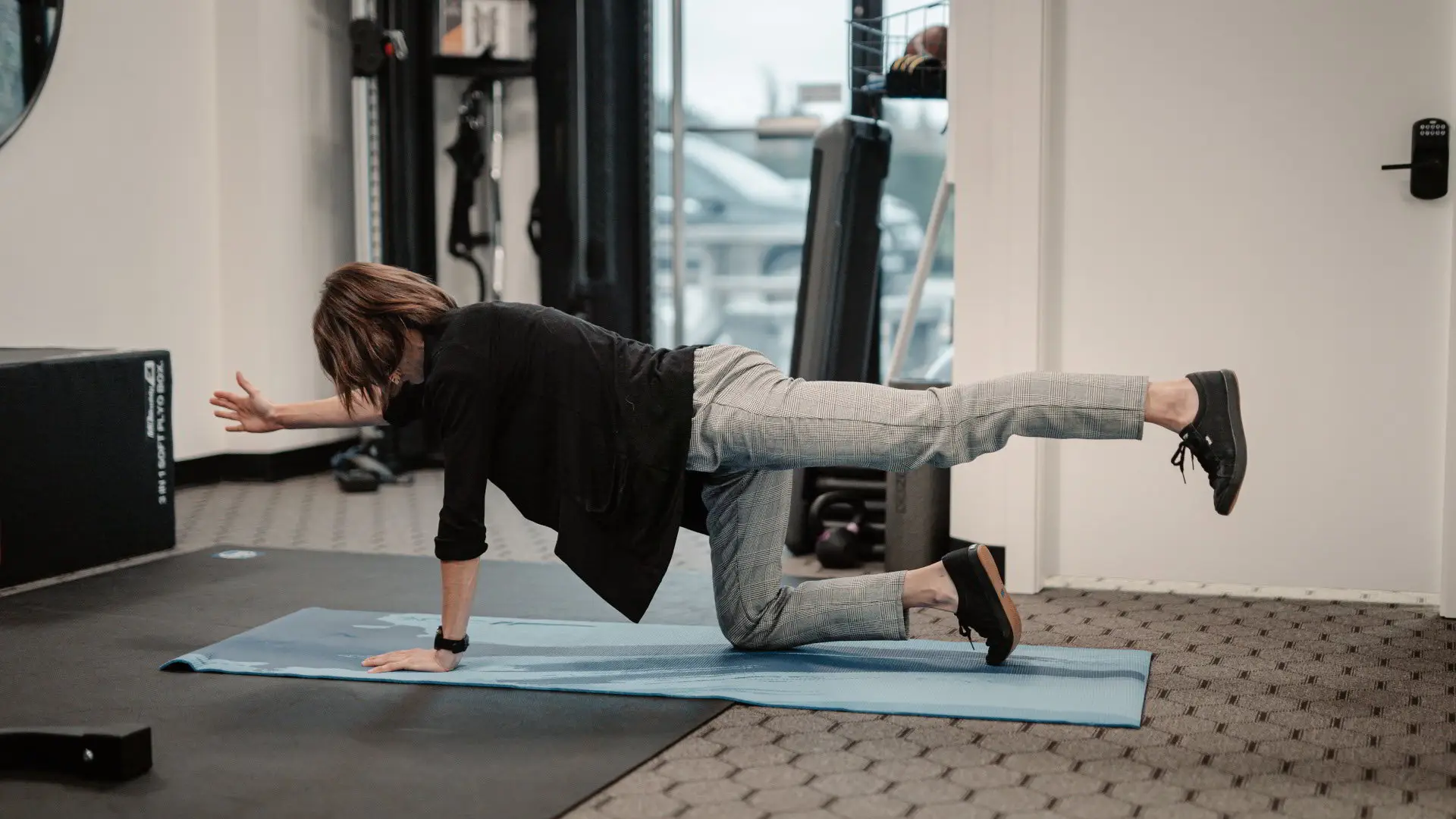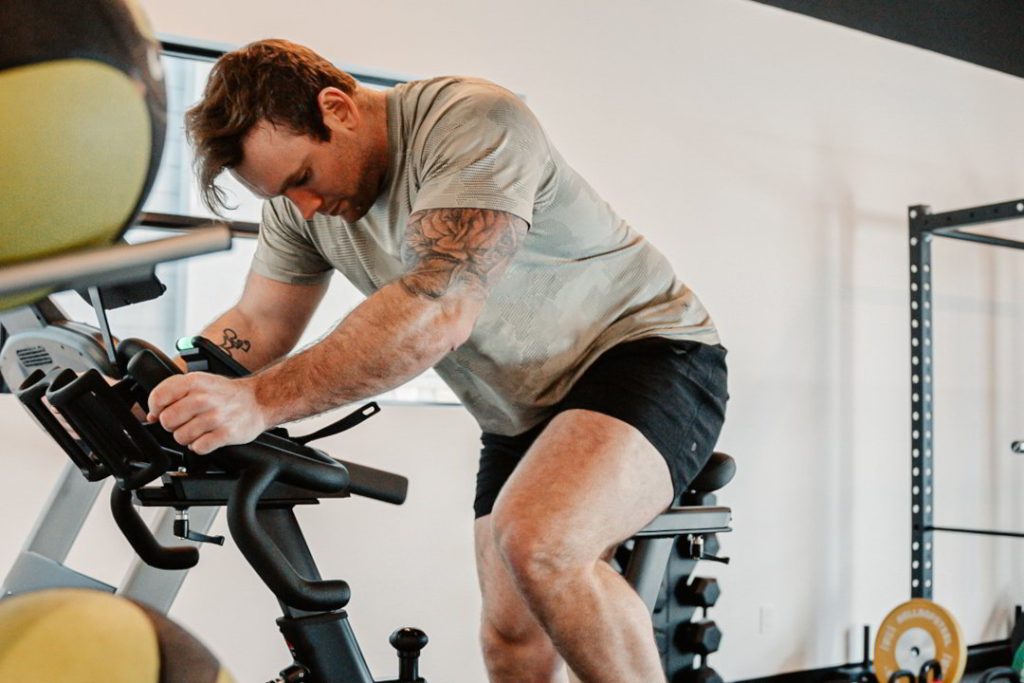
It’s that time of year again when the slopes call to us and we all start dreaming of skiing powdery hills until our legs ache. However, before you hit the slopes, it’s important to do some preparation so you don’t end up with any unwarranted injuries. Here are some tips from a physiotherapist on how to avoid injury while skiing.
Warm up before skiing to help prevent skiing injuries
Skiing is a great way to enjoy the winter weather and get some exercise. However, it’s important to warm up before hitting the slopes. A colder body and colder muscles are more likely to be injured, so it’s essential to take the time to prepare your body for skiing.
Now I know what you’re thinking, how do I warm up at the bottom of the hill when its already -10 degrees outside? The answer is actually quite simple, get moving! Motion is lotion. A 5-10 minute nice and easy dynamic warm up beside your car before you suit up is very important. The idea is to ramp up the heart rate, while also activating and mobilizing the muscles about to be used for the day.
A few rounds of 3-4 bodyweight exercises for reps of 10-15 with some dynamic arm and leg movements should be sufficient enough to help with this. Some examples include body weight squats, jumping jacks, arm and leg swings, torso twists, and walking lunges.
Another consideration is doing a couple runs on some freshly groomed greens before hitting the powdery blues and blacks!
These will help to get your muscles ready for action and once you’re warmed up, you’ll be able to ski with confidence, knowing that you’re less likely to get hurt. If you do happen to take a spill, don’t worry. Getting back up is all part of the fun!
Prehab! So you don’t have to rehab.
A HUGE aspect in preventing ski injuries is to establish a solid base prior to the season. Having the adequate strength, mobility, and cardio to tackle multiple 5-6 hour days on the slopes is extremely important when it comes to not only longevity and injury prevention but also overall health and wellness. Spending a few days a week for a couple months adopting a regular training routine will pay dividends during the ski season. The following aspects are often overlooked and undertrained, and unfortunately can result in unwanted injuries.

Strength/Stability
One of my favourite mottos is “you can’t go wrong getting strong”, and this holds very true, especially with injury prevention.
Our tissues adapt to the stressors we place on them. If the stress, or load, exceeds our tissue’s capacity, then we are more likely to get injured; however, If we have the adequate strength and stability to handle this stress, then it is smooth sailing – or skiing!
A proper regimen of lower and upper body exercises, as well as core stability exercises will allow you to have a fun, pain- and injury-free ski season! Focus on the main muscles involved with skiing – quadriceps, gluteals, hamstrings, core, and shoulder muscles.
Some examples may include squat/lunge variations, deadlift variations, push-ups, pull ups, rows, planks, dead-bugs, and bird-dogs.
Mobility
Mobility and stability go hand in hand. Mobility is often defined as the “ability of a joint to move actively through a range of motion”. I would go one step further here and say mobility is not only moving a joint through a range of motion (ROM) but also CONTROLLING a joint through its ROM.
Without adequate mobility and stability of our ankles, knees, hips, spine and shoulders, how can we expect to go through the long ski season without injury.
Stretching, banded joint mobilizations, foam rolling can all help increase range of motion if done consistently; however, this should be reinforced with strength training through this new increase in ROM to maintain and provide further control and stability of the body.
Proper mobility and stability in the body will definitely help counteract all the stressors skiing can place upon us, ie. all the twists, turns, jumps, moguls, and falls we may encounter.
 Cardio
Cardio
Often overlooked, endurance training is very important as well when it comes to shredding powder. Sometimes runs can take 10-15+ minutes before you reach the chairlift. How often do you reach the bottom of the hill and your quads are burning right up, you’re breathing heavily, and your heart rate is through the roof?
Endurance or cardio-respiratory training can help combat this prior to the season. This will help improve blood flow and oxygenation to your muscle tissues, so you’re not burning up each run and wearing out by lunch time. If you’re fatigued, you’re also more injury prone.
Now your traditional cycling, jogging, or elliptical 3+ times a week for longer durations can assist with this, but also circuit training with minimal rest breaks between exercises can definitely help as well!
Trouble getting started with a proper training regimen targeting all these aspects? Consult your health care practitioner, they can definitely help you you reach your goals and optimize your well-being!
Take rest breaks and stay hydrated!
Skiing is a great way to enjoy the outdoors and get some exercise, but it’s important to take breaks from time to time. Resting your muscles for a few minutes between runs helps to avoid fatigue and lowers your risk of injury. It’s also a good opportunity to grab a snack or drink to refuel your energy levels. Taking breaks also gives you a chance to take in the scenery and appreciate being in the mountains. So next time you’re out skiing, don’t forget to take a break now and then!
As any skier knows, the sport can be physically demanding, and it’s important to stay hydrated in order to prevent injuries. When you’re skiing, your body is working hard to keep you warm, and you can quickly become dehydrated. Drinking plenty of water helps to replace the fluids that you’re losing, and it also helps to keep your muscles and joints lubricated. So before you hit the slopes, be sure to drink plenty of water to stay hydrated and prevent ski injuries.
In conclusion, taking measures such as warming up, establishing baseline fitness levels or ‘pre-hab’, taking breaks, and staying hydrated can help prevent injuries while skiing. By preparing your body and being mindful of your movements on the slopes, you’ll be able to enjoy this exciting winter activity safely and confidently. Happy skiing!
FAQ
When do most ski injuries happen?
Many ski injuries happen when people are tired and their muscles are not properly warmed up. This is why it’s important to warm up, and take breaks while skiing. In addition, many injuries occur when skiers hit obstacles or crash into other skiers. Having the strength to withstand these impacts and and being mindful of your surroundings can help prevent these types of accidents.
How do I prepare for skiing?
In addition to physically preparing your body by warming up, it’s also important to have the proper equipment. Make sure that your skis or snowboard are properly fitted and in good condition, and wear a helmet for added safety. You may also want to take a lesson if you’re new to skiing, or brush up on your skills if it’s been a while since you last hit the slopes. You may also want to consult your healthcare practitioner before the season to tune-up your body and work on strength, mobility, and cardio levels!
What should I do if I experience pain or injury while skiing?
If you are experiencing severe pain or an obvious injury, stop skiing and seek medical attention immediately. If the pain is minor or manageable, take a break and rest your muscles before continuing to ski. If the pain persists, it’s best to seek medical advice. It’s always better to be safe and take care of any injuries promptly.
 ABOUT: Tess Mihell, MPT, BSc HK, CAFCI, YTT 200 – Physiotherapist- Certified in Dry Needling (100)
ABOUT: Tess Mihell, MPT, BSc HK, CAFCI, YTT 200 – Physiotherapist- Certified in Dry Needling (100)
An avid outdoors-person, while not in the office, Tess can be found skiing, skinning, rock climbing, hiking and pretty much anything that the beautiful Okanagan has to offer.
If you are suffering from nagging low back pain and need someone to help you navigate how to fix it, come see one of our Physiotherapists to help get you moving and start to feel strong again!


